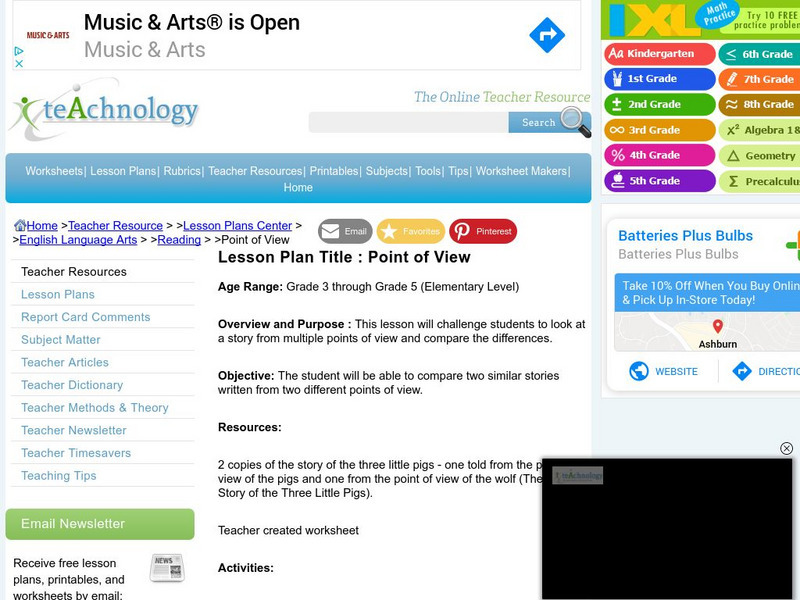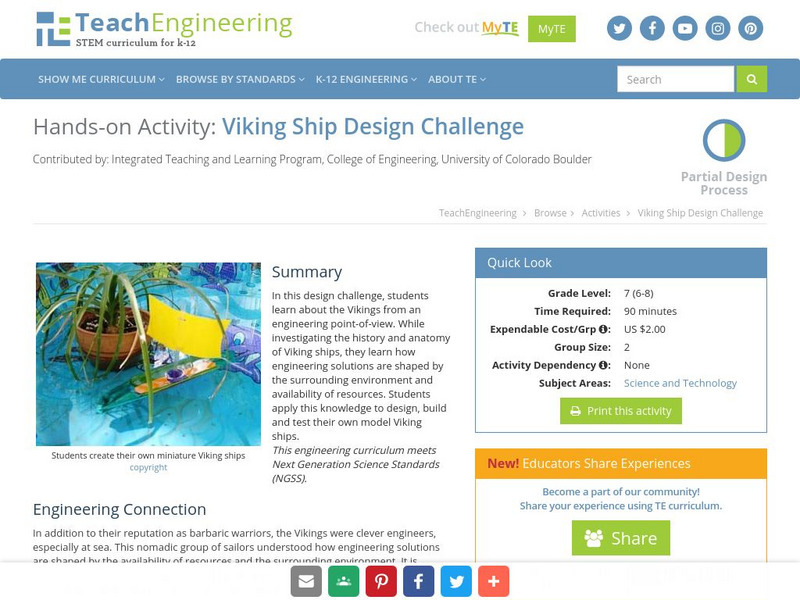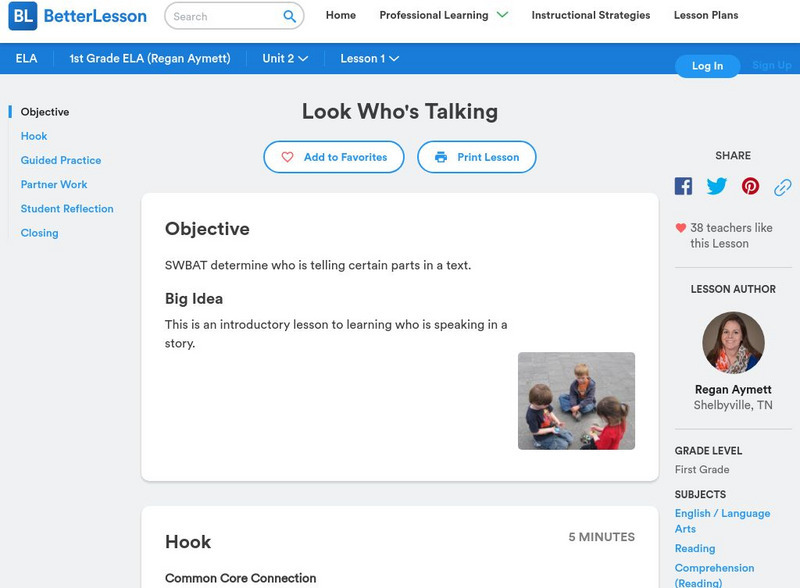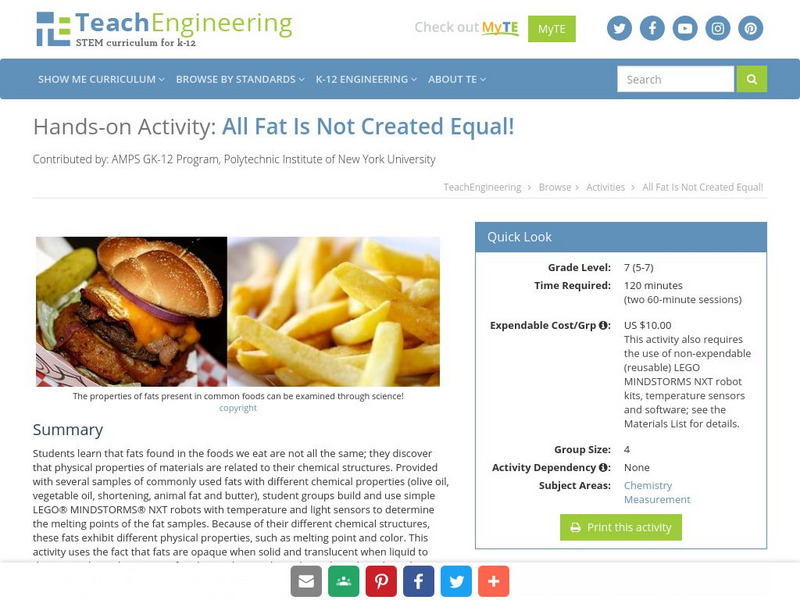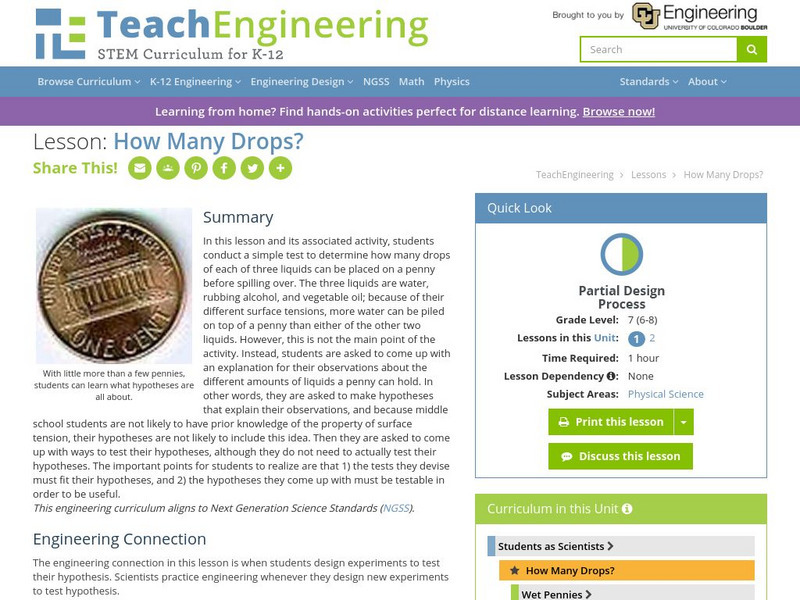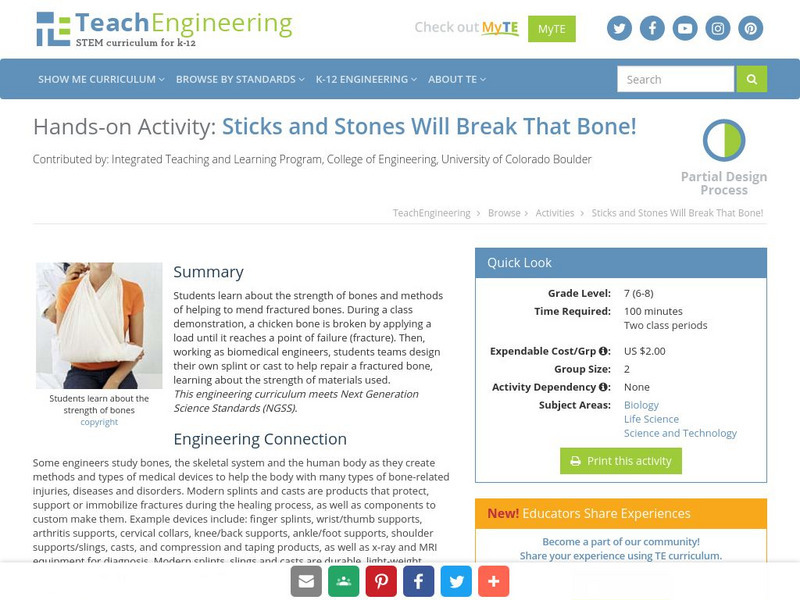Hi, what do you want to do?
Better Lesson
Better Lesson: Rl.3.6: Distinguish Their Own Point of View
Links to 22 lessons that focus on skills within third grade reading standard RL.3.5: Distinguish their own point of view from that of the narrator or those of the characters.
Better Lesson
Better Lesson: Rl.4.6: Compare/contrast the Point of View From Different Stories
Links to 29 lessons and activities that build student skills in standard RL.4.6: Compare and contrast the point of view from which different stories are narrated, including the difference between first and third person narrations.
Read Works
Read Works: Point of View Unit
[Free Registration/Login Required] A series of three lesson plans designed to teach students first and third person point of view and the differences between them. Lessons are based on the books White Socks Only by Evelyn Coleman, Where...
Teachnology
Teachnology: Lesson Plan: Point of View
In this lesson, learners compare/contrast two versions of "The Three Little Pigs" including the traditional from the pigs' point of view and "The True Story of the Three Little Pigs" by Jon Scieszka and Lane Smith version as told from...
TeachEngineering
Teach Engineering: Cool Views
In this activity, students will learn the meaning of preservation and conservation and identify themselves and others as preservationists or conservationists in relation to specific environmental issues. They will understand how an...
Rock and Roll Hall of Fame
Rock & Roll Hall of Fame: Sti Lesson 17: Irony Made Understandable
One of the more difficult literary concepts to teach is irony, especially ironic point of view. Not only do students often miss the subtle linguistic clues, they become distracted by the issue of author's intent. Whether it's the classic...
British Library
British Library:20th Century Teaching resources:e.m Forster's a Room With a View
This series of activities is designed to provide students with opportunities to investigate the writer at work. By deconstructing E.M. Forster's style and contextual influences, they will develop and improve the quality of their...
TeachEngineering
Teach Engineering: Tears in Rain
The goal of this activity is for students to develop visual literacy. They learn how images are manipulated for a powerful effect and how a photograph can make the invisible (pollutants that form acid rain) visible (through the damage...
TeachEngineering
Teach Engineering: Are We Like Robots?
Students explore the similarities between how humans move and walk and how robots move, so they come to see the human body as a system from an engineering point-of-view. Movement results from decision making (deciding to walk and move)...
TeachEngineering
Teach Engineering: Viking Ship Design Challenge
In this design challenge, students learn about the Vikings from an engineering point-of-view. While investigating the history and anatomy of Viking ships, they learn how engineering solutions are shaped by the surrounding environment and...
TeachEngineering
Teach Engineering: Engineering for the Earth
Young students are introduced to the complex systems of the Earth through numerous lessons on its natural resources, processes, weather, climate and landforms. Key earth science topics include rocks, soils and minerals, water and natural...
New Zealand Ministry of Education
Nz Ministry of Education: Logging Up Reading Mileage
Students will select and enjoy their own range of contemporary and historical texts, display a knowledge of different genre and their particular content, and identify literary aspects of chosen texts for sustained silent reading. They...
Alabama Learning Exchange
Alex: Using Fairy Tales to Teach the Short Stories
Familiar fairy tales are used as guides to help students analyze the elements of the short story: plot, theme, setting, point of view, and character.
Better Lesson
Better Lesson: Look Who's Talking
This is an introductory lesson to learning who is speaking in a story. The students do this specific skill after the teacher models it in the hook. They get guided practice sorting and labeling who is talking in the guided practice and...
University of Maryland
Voices of Democracy: John Fitzgerald Kennedy, "Inaugural Address" January 1961
John F. Kennedy's inaugural speech is one of the most famous speeches in American history. Teachers can use this lesson to teach Language Arts standards, as well as Social Studies standards. This lesson plan includes pre-reading ideas,...
PBS
Elie Wiesel: First Person Singular . Teaching Guide | Pbs
In this unit, students will learn about the Holocaust through the point of view of the Nobel Laureate and Holocaust survivor, Elie Wiesel. The accompanying teaching guide includes activities related to self-reflection, listening, and...
TeachEngineering
Teach Engineering: Concentrate This! Sugar or Salt
Students investigate the property dependence between concentrations and boiling point. In Section 1, students first investigate the boiling point of various liquid solutions. In Section 2 they analyze data collected from the entire class...
TeachEngineering
Teach Engineering: Concentrate This! Sugar or Salt
Students investigate the property dependence between concentrations and boiling point. First, they investigate the boiling point of various liquid solutions. Then they analyze data collected from the entire class to generate two boiling...
TeachEngineering
Teach Engineering: All Fat Is Not Created Equally!
Students learn that fats found in the foods we eat are not all the same; they discover that physical properties of materials are related to their chemical structures. Provided with several samples of commonly used fats with different...
TeachEngineering
Teach Engineering: How Cold Can You Go?
Students explore materials engineering by modifying the material properties of water. Specifically, they use salt to lower the freezing point of water and test it by making ice cream. Using either a simple thermometer or a mechatronic...
TeachEngineering
Teach Engineering: Students as Scientists
This curricular unit contains two lessons that let students actually do the work of scientists as they design their own experiments to answer questions they generate. In the first lesson and its associated activity, students conduct a...
TeachEngineering
Teach Engineering: How Many Drops?
In this lesson and its associated activity, students conduct a simple test to determine how many drops of each of three liquids can be placed on a penny before spilling over. The three liquids are water, rubbing alcohol, and vegetable...
TeachEngineering
Teach Engineering: Global Climate Change
Students learn how the greenhouse effect is related to global warming and how global warming impacts our planet, including global climate change. Extreme weather events, rising sea levels, and how we react to these changes are the main...
TeachEngineering
Teach Engineering: Sticks and Stones Will Break That Bone!
Students learn about the strength of bones and methods of helping to mend fractured bones. During a class demonstration, a chicken bone is broken by applying a load until it reaches a point of failure (fracture). Then, working as...








